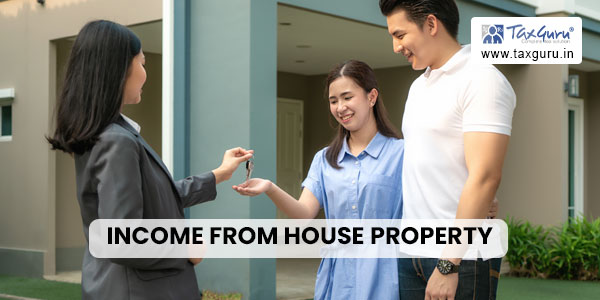Master the nuances of lease rent taxation with our comprehensive guide. Learn how courts, including the Supreme Court, determine if lease rent is business income or income from house property. Uncover the impact on tax liabilities and deductions, with insights into claiming benefits like a 30% standard deduction or business expenses. Explore key factors for categorization, such as the Lease Deed, purpose, duration, nature of activities, and control. Gain wisdom from relevant case laws like Batra Palace (P.) Ltd. v. Commissioner of Income-tax and Sultan Brothers (P.) Ltd. v. CIT. Make informed decisions with insights from notable judgments, ensuring compliance and optimizing tax benefits.
First and foremost, it is important to note that various courts, including the Supreme Court, have held that the categorization of lease rent received should be based on individual facts and determined on a case-by-case basis. The classification of lease rent received by an assessee as either business income or income from house property carries significant implications. This determination directly affects the tax liabilities and deductions available to the assessee.
If the lease rent is treated as income from house property, the assessee can claim certain benefits. These include the ability to avail a standard deduction of 30% on the rental income and claim the interest paid under Section 24.
Alternatively, if the assessee chooses to treat the lease rent as business income, different deductions may be available. In this case, the assessee can claim deductions for business expenses incurred.
To provide clarity on the matter, it is essential to analyze the specifics of the lease agreement. The Lease Deed, which serves as a legal document outlining the terms and conditions of the lease, should be carefully examined. It is important to note whether the lease was entered into due to temporary adverse business conditions or as a long-term arrangement. Furthermore, the duration of the lease period should be taken into account, as it can provide insight into the intention behind the lease. The facts that should be taken into consideration can be:
a. Purpose and Intent: It is important to ascertain whether the lease was entered into due to temporary adverse business conditions or as a long-term arrangement. If the lease is primarily a business decision driven by the need to overcome short-term challenges, it is more likely to be treated as business income.
b. Duration of Lease: The duration of the lease period can provide valuable insight into the intention behind the lease. Long-term leases, typically spanning several years, may lean towards being categorized as income from house property. Short-term leases, on the other hand, may indicate a more business-oriented arrangement.
c. Nature of Activities: Assessing the nature of activities conducted on the leased property is crucial in determining the appropriate categorization. If the property is primarily used for commercial activities related to the assessee’s business, it strengthens the case for treating the lease rent as business income.
d. Control and Management: Examining the degree of control and management exercised by the assessee over the property can also influence the categorization. If the assessee retains significant control, indicating active involvement in the property’s operations, it supports the argument for categorizing the lease rent as business income.

Relevant Case Laws:
In the judgment of the Hon’ble High Court of Punjab and Haryana in the case of Batra Palace (P.) Ltd. v. Commissioner of Income-tax ([2017] 79 taxmann.com 324). In this case, the court dealt with a similar scenario where a building was owned by the assessee, and a portion of it was leased to another party for the purpose of operating a restaurant. The assessing officer initially treated the income received as income from house property, while the assessee contended that it should be classified as business income. The court analyzed the memorandum of understanding between the parties, which indicated a lease period of 12 years, renewable for an additional 12 years. The court noted that there was no evidence to suggest that the intention behind the lease was temporary in nature. Consequently, the court concluded that the income derived from the lease should be assessed as income from house property. The Hon’ble High Court in its aforesaid judgment had observed as under:
5. Admittedly, the assessee was owning a building in which it was running a hotel and restaurant business. A portion of the said property was leased out to another concern for running a restaurant by the name of ‘Pizza Hut’. The assessee claimed that this was done for a temporary period as the premises were vacated after two years and therefore the same had to be viewed as commercial exploitation of the asset. The Assessing Officer treated the income received from M/s. Pizza Hut as income from house property instead of income from business. The CIT (A) treated the income earned by the assessee as business income. It has been categorically recorded by the Tribunal on appeal by the revenue that perusal of the memorandum of Understanding dated 27.8.2002 between the assessee and the lessee i.e. M/s. Pizza Hut showed that the property in question was given for use for a period of 12 years which was renewable for a further period of 12 years. It was nowhere shown that the intention to let out was only for a temporary period. Thus, the CIT (A) was not held to be justified in concluding that the letting out was to be taken as commercial exploitation of the property. The intention of the assessee was to enjoy rental income from the letting out of the property which was rightly treated as income from house property by the Assessing officer.
In the case of Sultan Brothers (P.) Ltd. v. CIT AIR 1964 SC 1389, the Apex Court held that the rent from the building should be computed separately from the income from the furniture and fixtures and in the case of rent from the building, the assessee would be entitled to the allowances mentioned in sub section 4 of section 12 of the Income Tax Act, 1922 (in short, “the 1922 Act”) and in the case of income from the furniture and fixtures, to those mentioned in sub section 3, and that no part of the income could be assessed under section 9 or 10 of the 1922 Act.
It is pertinent to consider other relevant judgments that pertain to the categorization of lease rent. These judgments provide valuable insights and guidance in similar cases. Some notable judgments include:
a. CIT Super Fine Cables (P.) Ltd. [1985] 154 ITR 532/[1984] 19 Taxman 515 (Delhi),
b. CIT Shri. Lakshmi Silk Mills Ltd. [1951] 20 ITR 451 (SC),
c. CIT V.S.T. Motors (P.) Ltd. [1997] 226 ITR 155/92 Taxman 205 (Mad.),
d. CIT Pateshwari Electrical & Associated Industries (P.) Ltd. [2006] 282 ITR 61/[2005] 148 Taxman 240 (All.),
e. CIT Aryan Industries (P.) Ltd. [1982] 138 ITR 718/[1983] 12 Taxman 64 (AP.) ,
f. CIT Vikram Cotton Mills Ltd. [1988] 169 ITR 597/36 Taxman 1 (SC) and
g. CIT v. Rajindra Flour & Allied Industries (P.) Ltd. [1981] 128 ITR 402/6 Taxman 1 (Delhi)
Conclusion
From the above, it can be concluded that If a business has leased out the premise or portion of premise for temporary period because of non utilisation for a shorter duration and Intention of assessee is not to exploit the resource then it can be concluded that it can be treated as Business income. On the other hand If assessee had leased out the premise for long period and the intention of the assessee was to enjoy rental income from the letting out of the property, then it can be assessed in Income from House Property.





